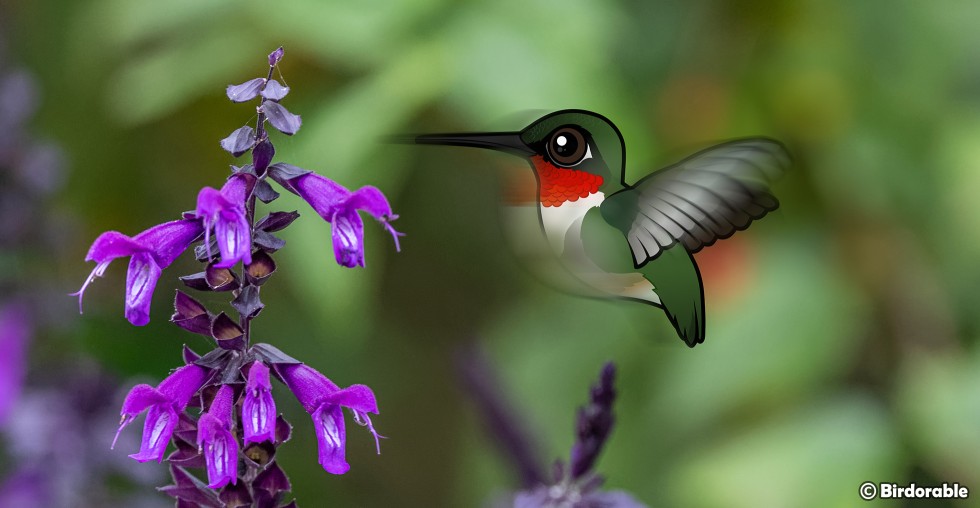Hummingbird Week 2024
Busting a Bird Myth: Can Hummingbirds Fly Backwards?

Hummingbirds are known for their extraordinary flight capabilities, including their unique ability to fly backwards. Unlike many bird-related myths, this particular belief is entirely true. Hummingbirds are indeed capable of backward flight, a remarkable skill that sets them apart from almost all other bird species. To better understand, let's look at the mechanics behind this ability and see why hummingbirds are such exceptional fliers.
The key to a hummingbird's aerial prowess lies in its wings and the way it flaps them. Unlike most birds, which primarily use up-and-down wing strokes to generate lift and thrust, hummingbirds employ a figure-eight motion with their wings. This motion allows them to produce lift on both the upstroke and downstroke, enabling them to hover in place with pinpoint accuracy.
When a hummingbird wants to fly backwards, it simply adjusts the angle of its wings and the direction of its wingbeats. By reversing the direction of the figure-eight motion, hummingbirds can generate thrust in the opposite direction, propelling themselves backward. This adaptation is particularly useful when navigating tight spaces, such as when they are feeding on nectar from flowers or avoiding obstacles in dense foliage.
The ability to fly backwards is not the only impressive aspect of hummingbird flight. These tiny birds can also hover, fly sideways, and perform rapid, acrobatic maneuvers. Their flight muscles are incredibly powerful, making up 25-30% of their body weight, which is significantly more than the flight muscle mass of most other birds. This muscle power, combined with their rapid wingbeats—ranging up to 80 beats per second—allows hummingbirds to execute their complex flight patterns with ease.
Backward flight is crucial for hummingbirds' feeding habits. These birds primarily feed on nectar, which they extract from flowers using their long, specialized bills and extendable tongues. When feeding, hummingbirds often need to hover in front of flowers and occasionally move backward to position themselves correctly or retreat from a flower they have finished feeding from.
If you've ever watched a hummingbird feeding, you have probably seen this behavior and not even realized it, because it happens fast and naturally. The hummingbird simply zips from flower to flower (or nectar port to nectar port on a feeder), and in the process ends up moving backwards as it goes between the blossoms. This ability to maneuver with such precision is essential for ease of feeding, and thus their survival, as it enables them to efficiently exploit a wide range of floral resources.
Myth: Confirmed!
The myth that hummingbirds can fly backwards is not a myth at all but a fascinating fact. Their unique wing structure and powerful flight muscles enable them to perform a range of impressive aerial maneuvers, including backward flight. This remarkable skill is just one of the many adaptations that make hummingbirds such captivating and extraordinary creatures.
Thanks for following along for our celebration of hummingbirds here at Birdorable during Hummingbird Week, in conjunction with Pollinator Week! We hope you enjoyed the new additions to Birdorable's hummingbird family and that you learned something about these tiny feathered jewels!













Comments
Leave a comment
Thank you!